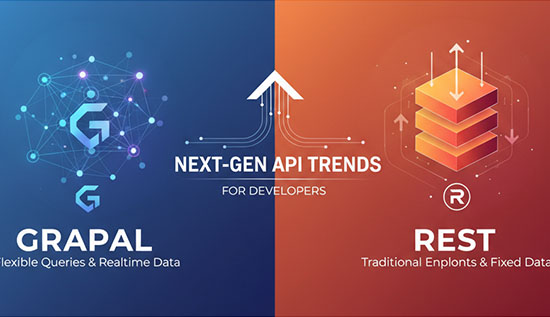Importance of Digital Communication to Boost Productivity

Boost productivity with digital communication! Highlight its advantages, and key differences to enhance efficiency in the modern workplace.
Increasing productivity in a range of businesses in today's fast-paced environment requires electronic interaction. Businesses use online interactions, from emails to video conferencing to increase cooperation optimize workflows and lower operating expenses.
This article explores the advantages of digital communication its potential drawbacks and its impact on workplace efficiency. Additionally, we will discuss which software are used in digital communication and the difference between analog, digital communication interview questions and internet communication to give a comprehensive grasp of this crucial instrument.
The internet has grown to be an essential tool for both individuals and also corporations as remote work and global corporate operations become more prevalent. With a basic understanding of electronic communication we can maximize its benefits and limit any potential negatives.
What is Digital Communication?
Data transmission via digital signals as opposed to analog signals is referred to as digital interaction. Emails instant messaging, social media and also video conferencing are just a few of its many formats. Electronic communication offers improved security faster data transfer and more efficiency than analog alternatives.
Key Features of Digital Communication:
- High Accuracy & Speed: Digital signals guarantee more accurate and speedy transmission.
- Data Security: Encrypted communications improve data security and privacy.
- Scalability: Fits companies of all sizes, from start-ups to large conglomerates.
- Cost-Effective: Reduces expenses associated with traditional communication methods such as printed memos and postal services.
- Multi-Channel Support: Integrates text audio video and image-sharing in one platform.
- Global Accessibility: Enables seamless international communication without geographic limitations.
Example 1: Corporate Communication
A multinational corporation conducts meetings using online interaction platforms like Zoom and also Microsoft Teams, which lowers travel expenses and boosts productivity. Without having to meet in person employees can work together in real time across time zones.
Example 2: Education Sector
E-learning platforms rely on digital communication for virtual classrooms, allowing students worldwide to access quality education seamlessly. Learning is made more interactive and accessible through online tests live chats and also video lectures.
Quantization in Digital Communication
Quantization in digital communication is the process of converting analog signals into digital signals by assigning discrete values. Making sure that data is transferred undistorted and in a clear manner is crucial also. The method allows for efficient information processing, transmission and also storage without the typical deterioration of analog signals.
Steps in Quantization:
- Sampling: Regular intervals are used to sample the analog signal.
- Assigning Levels: Predetermined levels are used to assign a numerical value to each sample.
- Encoding: To be sent the quantized values are transformed into binary code.
- Error Correction: Digital signal processing techniques are used to detect and rectify any disparities.
Example: Voice over IP (VoIP)
When making a VoIP call, quantization in digital communication converts analog audio signals into digital format with the least amount of noise possible ensuring a clean speech. This process improves the clarity of calls and the efficiency of data transfer across the internet.
Advantages of Digital Communication
The advantages of digital communication are vast, making it the preferred mode of communication across industries.
Key Benefits:
- Greater Productivity: Quicker choices made by immediate communication.
- Cost Reduction: Removes costs associated with phone calls and traditional mail.
- Global Reach: Facilitates smooth communication between time zones also.
- Automation and Integration: Increases workflow management by integrating with AI-powered solutions.
- Data Retrieval and Storage: Cloud storage enables easy access to past communications.
- Flexibility: Enables employees to work remotely without sacrificing productivity also.
- Collaboration and Engagement: Promotes teamwork by providing in-the-moment feedback and also discussions.
Use Case: Remote Work
Companies like Google and Microsoft leverage digital communication to facilitate remote work increasing worker satisfaction and productivity. Collaboration tools allow workers to keep in contact regardless of their physical locations ensuring efficient productivity and accountability.
Disadvantages of Online Communication
While digital communication has numerous benefits there are certain drawbacks to consider.
Challenges:
- Absence of Personal Interaction: Virtual communication lacks the warmth of face-to-face interactions also.
- Cybersecurity Risks: A higher chance of hacking and data leaks.
- Technical Problems: Communication may be impacted by software malfunctions and also internet outages.
- Overload of Information: Excessive emails and messages can lead to information fatigue.
- Dependency on Technology: Requires reliable internet access and digital literacy skills.
- Miscommunication: Lack of non-verbal cues can lead to misunderstandings.
Example: Misinterpretation in Emails
When an employee misinterprets an email's tone it can cause miscommunications and a decline in workplace harmony. Online communications can occasionally be interpreted differently than intended when body language and verbal intonation are absent.
Digital Communication Interview Questions
Here are some typical interview questions for people getting ready for a career with electronic communication:
1. What is digital communication and how does it differ from traditional communication?
2. Describe the importance of quantization in digital interaction.
3. In a business setting what are the benefits from online communication?
4. What are the drawbacks of communicating online and how might they be lessened?
5. Which software are used in digital communication and also how do they impact productivity?
6. Explain the difference between analog and digital communication with real world applications.
7. In what ways does online interaction improve brand visibility and consumer engagement?
8. Describe the main obstacles regarding electronic communication and how they can be overcome?
9. How can companies enhance internal operations through online communication?
10. Which trends do you think will influence the use of technology in the future?
Which Software Are Used in Digital Communication?
There are numerous software tools available to improve digital communication in both personal and business settings.
Popular Software:
- Microsoft Teams and Zoom are ideal for video conferencing and also collaborative meetings.
- Slack and Discord: Tools for instant communication and team collaboration.
- Trello & Asana: Enhance project management and communication.
- Google Workspace & Microsoft 365: Facilitate email, file sharing and document collaboration.
- WhatsApp & Telegram: Provide secure and real-time messaging for business and personal use.
- CRM Systems: Tools like HubSpot and Salesforce streamline customer communication and sales tracking.
Use Case: Team Collaboration
To ensure smooth digital communication and work delegation, a marketing agency manages campaigns using Slack and Asana. Without frequent meetings, workers are informed about the status of the project.
Read More: What Do You Mean by Digital Signature and How to Create It?
Conclusion
The importance of digital communication in boosting productivity cannot be overstated. Businesses and individuals also can improve their communication collaboration and efficiency by embracing current tools and methods. However, it is essential to address challenges such as cybersecurity risks and information overload.
Understanding the difference between analog and digital communication allows businesses to choose the right methods and tools for seamless integration. Investing in online interaction technologies promotes a more connected, agile and productive working environment. As technology advances remaining current on the newest developments in electronic communication will be critical to preserving efficiency and competitiveness in any industry.
Read More: Best Digital Marketing Strategies for Tech Startups in 2025
More Articles
 25 Nov 2025
25 Nov 2025
Coding Bootcamps for iGaming Developers | Learn Game Dev
Coding bootcamps for iGaming developers offer a fast path into game creation, guiding beginners and professionals toward real casino-grade coding skills.
 24 Nov 2025
24 Nov 2025
Responsible Gaming Tools | Player Protection Solutions
Protect players and enhance integrity with next-gen Responsible Gaming Tools. Learn how to implement responsible gambling solutions that promote safety, fairness, and control.
 24 Nov 2025
24 Nov 2025
Increase User Engagement with Cross-Platform Strategies
Learn cross-platform engagement strategies to strengthen consistency and boost user interaction across all digital channels.
 20 Nov 2025
20 Nov 2025
GraphQL vs REST: Next-Gen API Trends for Developers
Compare GraphQL vs REST to optimize API performance, scalability and modern application design with best practices for developers.